 A propósito da questionável decisão do IGESPAR em abandonar a classificação do primeiro bairro social da República Portuguesa, o Bairro do Arco Cego, vale a pena ler:
A propósito da questionável decisão do IGESPAR em abandonar a classificação do primeiro bairro social da República Portuguesa, o Bairro do Arco Cego, vale a pena ler:WALLPAPER CITY GUIDE – LISBON
Phaidon, Paris, 2007
It would be natural to imagine that because the cosmopolitan Portuguese love to travel so much, their capital must be a forward-thinking, sophisticated, global city, affording endless delights to the visitor. In fact, the reality is somewhat different. One legacy of the military dictatorship that governed Portugal for more than half a century was a Lisbon rather reduced in both circumstance and confidence. Even today, 30 years or so after the fall of that regime, Lisbon can appear a pretty provincial place, full of cliques and clandestine pleasures.
True, this was the centre of what was arguably the first global empire in history, but if you are unlucky enough to arrive on a wet, wintry Wednesday, it’s fair to say that you aren’t likely to linger.
Amoreiras Towers
Designed by the Portuguese architect Tomás Taveira and added to the Lisbon skyline in the 1980’s, the Amoreiras complex, featuring office and high-end residential towers plus one of Lisbon’s first shopping centers, is probably the most consensual construction in town: you will hardly find anyone who likes it. The boldness of the glass towers, as well as the sheer size and colour palette of the whole edifice, has been slammed by critics for smacking of ostentatious and aggressive postmodernism. It didn’t help that Taveira was involved in a extremely high-profile sex scandal soon after it was built. [p.15]
Hotels
At first glance, Lisbon does not have the most enchanting array of places to sleep. International names have generally bypassed the city – even the Design Hotels chain preferred the centuries old royal resort of Cascais, 30 km away, where you will find the still less than trilling Farol Design Hotel. [p.16]
Architour
The Lisbon authorities have not been particularly proactive about protecting architecture that’s too recent to be deemed ‘historical’. Salazar’s dictatorship ended just three decades ago, but only a few modernist churches, monuments and schols remain faithfull to their original purpose. Happily, it seems the tide is shifting. Lisbon City Council plans to further the restoration of Fernando Silva’s much-loved Cinema São Jorge and is considering salvaging from ruin the 1925 Teatro Capitólio (Parque Mayer) by Luís Cristino da Silva. [p.64]
Foto: O bairro na década de 1960 antes do início da descaracterização. Não fosse o provincianismo, o antigo IPPAR já o teria classificado. A sua protecção legal seria também uma boa maneira de celebrar o centenário da República.
Foto: O bairro na década de 1960 antes do início da descaracterização. Não fosse o provincianismo, o antigo IPPAR já o teria classificado. A sua protecção legal seria também uma boa maneira de celebrar o centenário da República.



















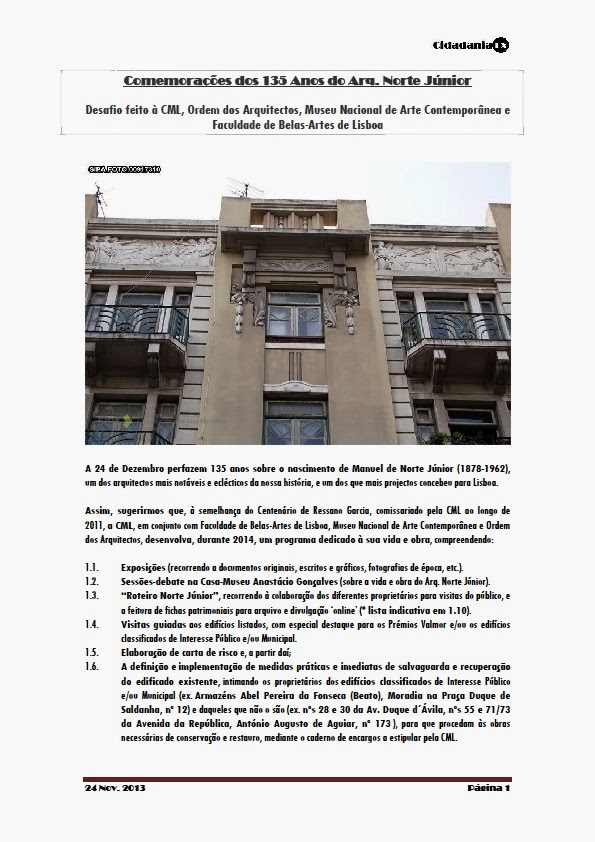


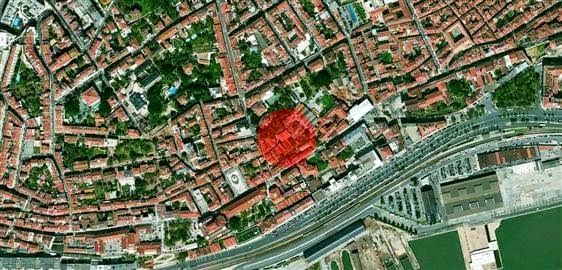

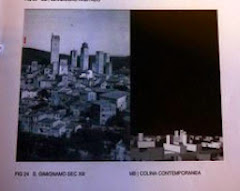




















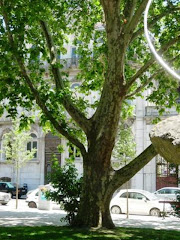





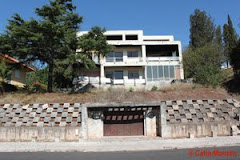















3 comentários:
Não vejo a relação entre esta foto do Bairro do Arco do Cego e o restante texto, sobre o
as torres das Amoreiras, os hotéis-Design,o Parque Mayer e ...o cinema São Jorge !
A menos que se queira ilustrar o "provicianismo nacional" e aí haverá muito em comum,entre todos estes exemplos ;
mas então faltarão muitos mais exemplos do que os referidos, como sejam as torres "Estoril-Sol" que serão o exemplo máximo de provicianismo nacional !
Eh pá, bolas, vocês andaram a escolher quotes a dedo.
Querem que eu vá buscar o guia e escreva aqui o resto para pôr isto em contexto?
Este blog às vezes é um bocadinho ridiculo. Valha-me deus.
LOBO VILLA,25-8-09
Desconheço o autor deste "Wallpaper City Guide" sobre Lisboa e dispenso o seu conhecimento.É um "guia" muito rasca ,como tantos outros estrangeiros que se comprazem em provincianar Portugal e os portugueses.
Não tem ponta por onde se lhe pegue; o texto é de escárnio e francamente merdoso.
A ligação das Torres das Amoreiras ao "escândalo sexual" de Taveira é um exemplo da baixesa desta prosa inglesa !
Srs. directores deste blogg: temos de aturar fancaria desta ?
Enviar um comentário